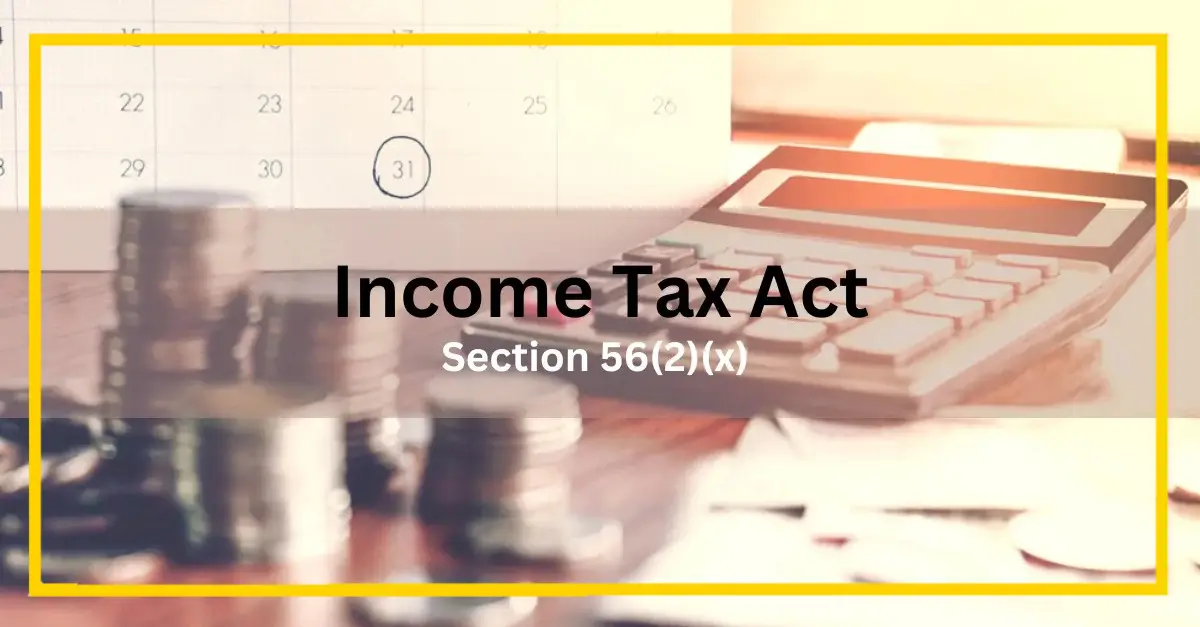The provisions of clause (x) in Section 56(2) of the Income Tax Act govern the taxable treatment of gifts received by an individual/HUF. In this article, we will examine the nitty gritty’s of Section 56(2)(x).
Section 56(2)(X) – The Finance Act of 2017 added a new clause (x) to section 56’s sub-section (2) that stipulates that any person who receives money or property on or after January 1, 2017, without proper consideration or for a small sum of money, will be subject to tax under the heading ‘Income from Other Sources. This was done in order to prevent the practice of receiving money or property without consideration or for insufficient consideration.
What Falls Under Section 56(2)(X) of Income Tax Act?
Clause (X) was added to section 56(2) to ensure that the following receipts during the preceding year are taxed as income in the hands of any person under the head ‘Income from Other Sources: https://incometaxindia.gov.in/pages/acts/income-tax-act.aspx,’ subject to the other requirements contained in the clause:
- Any sum of money received without consideration, the aggregate value of which exceeds ₹50,000 during the financial year;
- Any immovable property received without consideration, the stamp duty value of which exceeds ₹50,000;
- Any immovable property received for a consideration that is less than stamp duty value by an amount exceeding ₹50,000;
- Any movable property received without consideration wherein the aggregate fair market value whereof exceeds ₹50,000;
- Any movable property received for a consideration that is less than fair market value by an amount exceeding ₹50,000.
Exceptions to Section 56(2)(X) of Income Tax Act
However, there are some exceptions to this clause. For example, this clause does not apply to
- Any sum of money or property received from a relative
- Any sum of money received on the occasion of an individual’s marriage
- Any sum of money received under a will or by way of inheritance
- Any sum of money received in anticipation of the death of the payer or donor, as the case may be
- Any sum of money received from any local authority as defined in the Explanation to Clause (20) of Section 10.
To get an exhaustive list of the exceptions to this clause you can always get in touch with the experts at Vakilsearch for a free consultation.
Use Vakilsearch`s Income Tax Calculator to determine your taxable income and record your Individual Tax Return (ITR) with ease.
Who can be considered a relative in the case of an individual assessee?
|
Features of Section 56(2)(X) of Income Tax Act
The aforementioned receipts that exceed the threshold limit of ₹50,000 are taxable and the amount liable to tax would be as follows.
| Particulars of Receipt | Threshold Limit | Taxable Liability |
| Sum of money received without consideration | This form of receipt is not taxable when the sum of money received during the previous year in question, in aggregate, does not exceed ₹50,000. | If the threshold of ₹50,000 is exceeded, the entire amount received (and not just the amount in excess of ₹50,000) is liable to tax. |
| Immovable property received without consideration | This form of receipt is not taxable when the stamp duty value of the sale does not exceed ₹50,000. | The stamp duty value of property received (if the stamp duty value of the property received exceeds ₹50,000) is liable to tax. |
| Immovable property received for a consideration that is less than the stamp duty value | This form of receipt is not taxable when the difference between the stamp duty value of the immovable property and consideration does not exceed ₹50,000. | The entire difference between the stamp duty value and the consideration is taxable when the difference exceeds ₹50,000. |
| Movable property received without any consideration | This form of receipt is not taxable when the aggregate fair market value of the movable property received during the financial year does not exceed ₹50,000. | If the threshold of ₹50,000 is crossed, the entire aggregate fair market value (and not just the amount in excess of ₹50,000) is liable to tax. |
| Movable property received for consideration that is less than its fair market value | This form of receipt is not taxable when the difference between the aggregate fair market value and consideration does not exceed ₹50,000. | If the threshold of ₹50,000 is exceeded, then the entire difference is taxable and not just the difference in excess of ₹50,000. |



